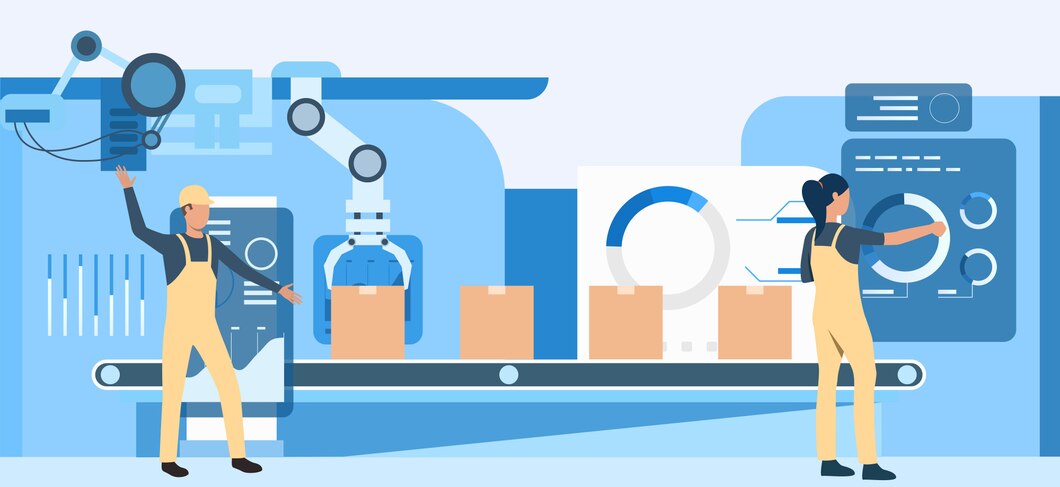Predictive vs Prescriptive AI in the Supply Chain: Moving from Insight to Intelligent Action
This blog explores how predictive and prescriptive AI are transforming supply chains from reactive to proactive. It explains how businesses can move beyond insights to take intelligent, data-driven actions that improve efficiency and decision-making.

Table of Contents
- The Problem with Prediction Alone
- Predictive AI: Seeing Around the Corner
- Common Predictive Use Cases:
- Prescriptive AI: Deciding and Doing
- Why the Difference Matters
- How to Move from Predictive to Prescriptive
- The ROI of Prescriptive Supply Chains
- From Insight to Action
The Problem with Prediction Alone
Most manufacturers already use some form of AI in their supply chains. Forecasting tools predict demand, analytics platforms identify patterns, and dashboards visualize what might happen next. That is predictive AI, and it’s useful.
But it’s also limited. Predictive models can tell you what is likely to happen. They don’t tell you what to do about it. That is where prescriptive AI comes in.
The next leap in supply chain intelligence is not just about knowing. It is about acting.
Predictive AI: Seeing Around the Corner
Predictive AI uses historical data, statistical models, and machine learning to forecast future outcomes. In supply chains, this usually means anticipating demand, spotting risks, or estimating lead times.
Common Predictive Use Cases:
- Demand Forecasting: Predict sales spikes or slowdowns using past data and external signals like seasonality or market trends.
- Supplier Risk Modeling: Identify potential disruptions by analyzing supplier performance, location, or compliance history.
- Maintenance Forecasting: Predict when equipment might fail using sensor data and historical breakdown patterns.
- Inventory Replenishment: Estimate reorder points to prevent stockouts or overstocking.
Predictive AI gives you visibility into what is coming. But visibility alone is not enough. Predictions don’t always translate into better decisions.
Prescriptive AI: Deciding and Doing
Prescriptive AI takes things further. Instead of just forecasting outcomes, it analyzes multiple scenarios, weighs trade-offs, and recommends or even executes the best course of action.
It is the difference between “here’s what might happen” and “here’s what we should do next.”
Prescriptive AI in Action:
- Dynamic Inventory Balancing: Automatically shift inventory between warehouses based on forecasted demand changes.
- Supplier Negotiation: Suggest alternate vendors or pricing strategies when raw material costs fluctuate.
- Route Optimization: Replan logistics routes in real time based on traffic, weather, or capacity changes.
- Production Scheduling: Adjust production priorities automatically when a component shortage or machine downtime occurs.
Prescriptive systems use reinforcement learning, simulation, and optimization models to make recommendations that can be executed instantly.
Why the Difference Matters
The difference between predictive and prescriptive AI is not just technical. It is operational.
Predictive insights still rely on humans to interpret and act. That adds delay, bias, and inconsistency. Prescriptive AI closes that loop. It takes data, reasons through it, and acts quickly, while keeping humans in control.
Example:
- Predictive AI: “Demand for product X is expected to rise 18 percent next month.”
- Prescriptive AI: “Increase production of product X by 15 percent at Plant B next week and reorder component Y from Supplier Z to prevent shortages.”
That is the shift from visibility to agility.
How to Move from Predictive to Prescriptive
Moving to prescriptive AI is not about replacing what you already have. It is about connecting and evolving your systems.
1. Integrate Data Sources
Unify data from procurement, production, logistics, and finance. Prescriptive models depend on consistent, connected data. Most companies begin by streamlining data pipelines, often partnering with AI developers for hire to unify production, procurement, and logistics data into a single, trusted environment that supports prescriptive decision-making.
2. Create a Digital Twin
Build a real-time digital model of your supply chain. It allows AI agents to simulate decisions before executing them in the real world.
3. Automate Decision Loops
Start with low-risk tasks such as reorder recommendations or delivery routing before expanding to higher-impact areas.
4. Keep Humans in the Loop
Let your teams approve or override AI actions. This builds trust and ensures transparency.
5. Scale with Intelligent Agents
Once your prescriptive systems are stable, deploy agentic intelligence — self-learning agents that can collaborate and manage workflows across multiple functions.
The ROI of Prescriptive Supply Chains
Manufacturers that adopt prescriptive AI often see measurable improvements:
- 10 to 20 percent better forecast accuracy
- 15 to 25 percent reduction in inventory costs
- 30 percent faster response to disruptions
- Up to 20 percent increase in on-time delivery
These are not theoretical numbers. They come from real-world use cases where companies use AI not just to predict, but to decide.
From Insight to Action
Predictive AI gave supply chains vision. Prescriptive AI gives them direction. Together they create intelligent, adaptive systems that learn from every decision and keep improving. The manufacturers that close the gap between insight and action will lead the next decade of supply chain excellence. Those that keep relying only on dashboards and forecasts will always be reacting to yesterday’s problems.
If your organization is already forecasting demand but still making decisions manually, it is time to explore prescriptive intelligence. At Intellectyx, we help manufacturing and supply chain teams evolve from predictive analytics to agent-driven decision systems that are fast, explainable, and scalable.
Let’s talk about your next step. Schedule a discovery session and find out where prescriptive AI can bring the most value to your supply chain operations.
Related Articles
Get top Insights and news from our technology experts.
Delivered to you monthly, straight to your inbox.



